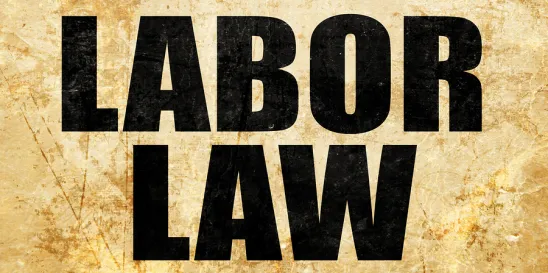It's hard to believe the end of 2023 is upon us. This year is one for the history books on the labor law and labor relations fronts. In a year packed with significant legal landscape changes and high-profile labor disputes, it's worth a quick recap of what are – in my view – the top 3 developments.
1. NLRB Revamps the Union Organizing Process
At the top of my list are changes the National Labor Relations Board (NLRB) made to the union organizing process. The board did several things in this regard. First, the NLRB reinstated the Obama-era “ambush” election rules that accelerate the union election timetable. Specifically, these rules truncate the amount of time between an election petition being filed and a vote being held (i.e., shorten the amount of time a company has to campaign).
Second, the agency issued arguably one of its most groundbreaking decisions in decades in Cemex. In that case, the NLRB altered the framework for how unions can and will be recognized and significantly loosened the standard for Draconian bargaining orders in some cases. Bottom line: The legal landscape, relatively speaking, makes it exponentially easier for workers to vote in unions now.
2. UAW Strikes at the Big 3
Labor relations issues haven't been top headlines in recent decades. That changed this year. The ongoing nationwide union push at Starbucks over the last two years has garnered much attention, along with some other high-profile union pushes and disputes. But the United Auto Workers' (UAW) coordinated strike efforts at Detroit's “Big Three” automakers truly was remarkable in terms of the national attention it garnered. For the first time, the UAW struck General Motors, Ford, and Stellantis (aka Chrysler) at once.
The UAW took a creative approach: it targeted specific plants for work stoppages while leaving others operational. This approach had two primary benefits to the union: 1) it allowed it to slow the cash burn on their strike pay bank (estimated to be north of $800 million at one point) and 2) it allowed the union to keep the companies guessing as to which plants the UAW may bring offline next – creating operational inefficiencies and uncertainty. Ultimately, this strategy resulted in deals with each of the Big 3, and most view the UAW as having come out on top in these negotiations.
3. NLRB Starts to Scrutinize Non-competes
On May 30, the NLRB's top lawyer, Jennifer Abruzzo, turned heads when she issued a memo signaling that her office was taking the view that non-compete agreements, in some circumstances, violate the National Labor Relations Act (NLRA). This development was somewhat surprising to some given that the NLRA was passed nearly 100 years ago and was not cited previously as a basis to invalidate standard restrictive covenants found in countless employment agreements around the country.
Abruzzo further announced the NLRB will be coordinating enforcement and a potential crackdown on non-competes with the other agencies, including the Federal Trade Commission – which this year also signaled an emphasis on these agreements – and the Department of Justice.
Given there's a month left to go before the end of 2023, there may be other significant developments to come, but, for now, these are my top three. Happy Holidays!




 />i
/>i
